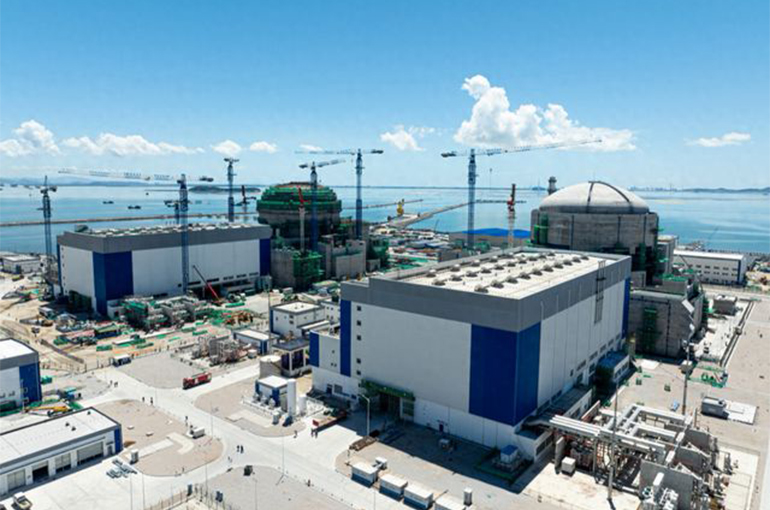 Zhangzhou’s First Hualong One Nuclear Unit Begins Supplying Power to China’s Grid
Zhangzhou’s First Hualong One Nuclear Unit Begins Supplying Power to China’s Grid(Yicai) Nov. 28 -- The Zhangzhou nuclear power plant, slated to be the world’s largest Hualong One reactor base, began supplying electricity to the grid today, marking a key step forward in China’s efforts to meet its green energy goals.
A series of tests will be carried out on the No. 1 unit to further verify its performance and to see that it meets the conditions for commercial operation, China National Nuclear Corporation said in a statement.
The plant’s ultimate goal is to deploy six Hualong One reactors, each capable of producing one million kilowatts of electricity. Four, including the first operational unit, are under construction, according to CNNC.
Nuclear energy is a cornerstone of China’s clean energy strategy. The country is quickly expanding its atomic energy capabilities to reduce reliance on fossil fuels and meet its carbon neutrality targets by 2060.
Hualong One, also known as HPR1000, is a third-generation pressurized water reactor technology jointly developed by state-owned CNNC and China General Nuclear Power Group.
The technology combines safety features with efficient energy production and meets international standards, representing China’s commitment to becoming a global leader in nuclear energy technology.
Each Hualong One unit can generate over 10 billion kilowatt hours of electricity per year, and is able to meet the annual power needs of one million people in a moderately developed country. That is equal to reducing coal use by 3.12 million tons and carbon dioxide emission by 8.16 million tons a year.
There are now 33 Hualong One units in operation or under construction in China and overseas, making them the world’s most widely used third-generation reactors.
The No. 5 unit at the Fuqing nuclear power plant in Fujian was the world's first Hualong One reactor to be put into commercial use. Also built by CNNC, it was commissioned in February 2021.
Editor: Tom Litting